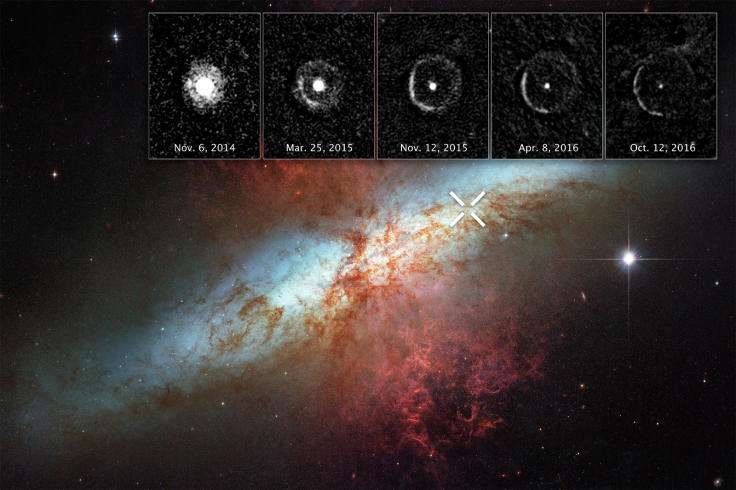Hubble captures 'light echo' rippling from rare Supernova explosion
Hubble captures rare light ripples from SN 2014J supernova explosion.
The Hubble Space Telescope has captured a 'light echo' — ripples of light from a supernova (explosion of a star) bouncing off a massive cloud of dust, according to a release from Nasa.
The rare cosmic event, dubbed SN 2014J, was discovered in January 2014 in the nearby starbust galaxy Messier 82, which is located some 11.4 million light years away and is commonly known as the cigar galaxy due to its unique elliptical shape.
SN 2014J has been classified as 'Type Ia supernova', which occurs in a binary star system (two stars orbiting one another) consisting of a burned-out white dwarf and a companion star. This was the closest such explosion in the last four decades.
The expanding shell of light from the event was captured in multiple images taken over the course of the next two years (November 2014 to October 2016), ultimately leading to a compiled video of the whole thing.
"Voices reverberating off mountains and the sound of footsteps bouncing off walls are examples of an echo. Echoes happen when sound waves ricochet off surfaces and return to the listener," says Space Telescope Science Institute that released a movie of the phenomenon on its Hubble website.
"Space has its own version of an echo. It's not made with sound but with light, and occurs when light bounces off dust clouds". As the report notes, on this occasion, the massive cloud of dust from which the light is seen bouncing and sweeping into the interstellar space extends 300 to 1,600 light years from the supernova. In all, only 15 light echoes from supernova explosions have been spotted till now.






















